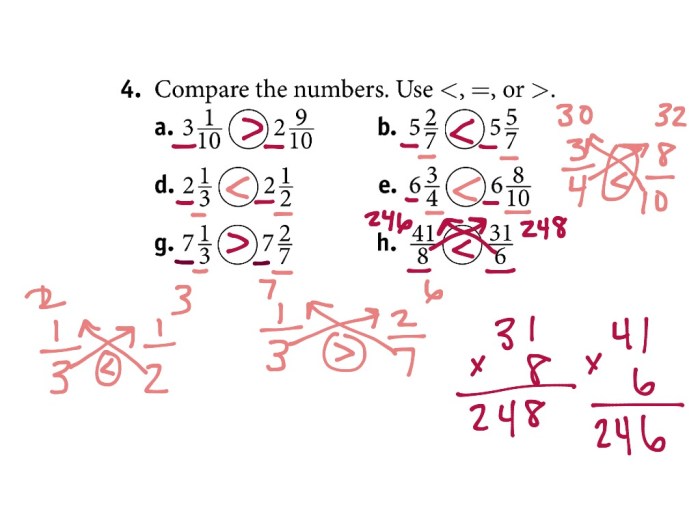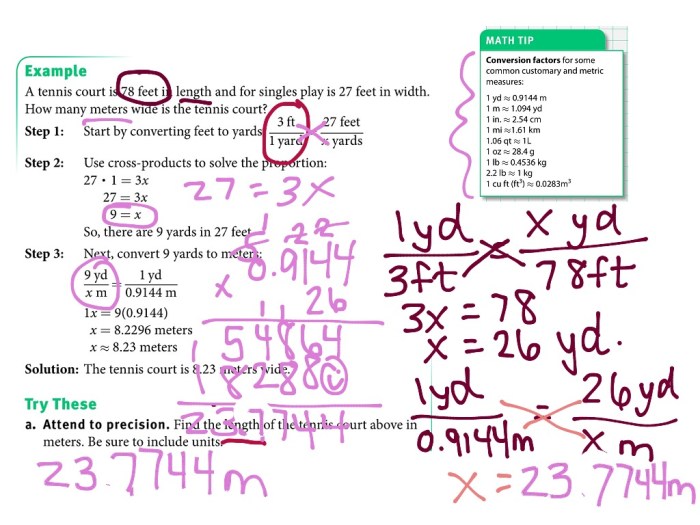Introducing the Core Connections Course 1 Answer Key, an indispensable guide that empowers students and educators to navigate the intricacies of mathematical concepts. This comprehensive resource provides a detailed roadmap for success, unlocking the mysteries of numbers, operations, measurement, geometry, data analysis, and algebra.
Delving into the depths of Core Connections Course 1, this answer key serves as a beacon of clarity, illuminating the path to mathematical mastery. With its precise explanations, step-by-step solutions, and engaging practice problems, students can conquer their mathematical challenges with confidence.
Core Connections Course 1 Overview

Core Connections Course 1 is a comprehensive mathematics program designed to provide students with a strong foundation in mathematical concepts and skills. The course is aligned with the Common Core State Standards for Mathematics and focuses on developing students’ critical thinking, problem-solving, and communication skills.
Core Connections Course 1 is divided into six units, each of which covers a different mathematical topic. The units are:
- Number and Quantity
- Algebra
- Functions
- Geometry
- Statistics and Probability
Each unit is divided into several chapters, which cover specific mathematical concepts and skills. The chapters are designed to be sequential, so that students build on their knowledge as they progress through the course.
The Core Connections Course 1 curriculum includes a variety of resources to support student learning, including:
- A student textbook
- A teacher’s edition
- An online homework system
- A variety of manipulatives and other hands-on materials
Unit 1: Numbers and Operations
In Unit 1, we delve into the fundamental concepts of numbers and operations. We will explore place value, number sense, and the operations of whole numbers, decimals, and fractions.
Place Value and Number Sense
Place value refers to the value of a digit based on its position within a number. It allows us to understand the magnitude and relative importance of each digit. Number sense is the ability to understand and manipulate numbers flexibly, recognizing their relationships and properties.
Operations with Whole Numbers
Whole numbers are the counting numbers (1, 2, 3, …) and zero (0). We perform operations such as addition, subtraction, multiplication, and division on whole numbers, following specific rules and algorithms.
Operations with Decimals
Decimals are numbers that represent parts of a whole, using a decimal point to separate the whole number part from the fractional part. We extend the operations of addition, subtraction, multiplication, and division to decimals, considering the placement of the decimal point.
Operations with Fractions
Fractions represent parts of a whole, written as a quotient of two integers (numerator and denominator). We perform operations on fractions, including addition, subtraction, multiplication, and division, by applying specific rules and algorithms.
Unit 2: Measurement and Geometry

Unit 2 delves into the concepts of measurement and geometry. Measurement involves quantifying physical attributes like length, area, and volume, while geometry explores the properties and applications of geometric shapes. This unit provides a solid foundation for understanding the spatial relationships and dimensions of the world around us.
Measurement is essential for various practical applications. In construction, accurate measurements ensure the proper fit and functionality of structures. In science, precise measurements facilitate accurate data collection and analysis. In everyday life, we rely on measurements for cooking, navigation, and countless other tasks.
Measurement, Core connections course 1 answer key
Measurement involves assigning numerical values to physical quantities. The most fundamental units of measurement are the International System of Units (SI), which includes the meter for length, kilogram for mass, and second for time.
- Length:The distance between two points, typically measured in meters (m), centimeters (cm), or kilometers (km).
- Area:The two-dimensional space occupied by a surface, measured in square meters (m 2), square centimeters (cm 2), or square kilometers (km 2).
- Volume:The three-dimensional space occupied by an object, measured in cubic meters (m 3), cubic centimeters (cm 3), or cubic kilometers (km 3).
Geometry
Geometry is the study of shapes and their properties. Geometric shapes are defined by their sides, angles, and dimensions. They can be classified into various categories, including polygons, circles, spheres, and cones.
- Polygons:Two-dimensional shapes with straight sides, such as triangles, squares, and pentagons.
- Circles:Two-dimensional shapes with a continuous curved boundary, defined by a single point called the center.
- Spheres:Three-dimensional shapes with a continuous curved surface, defined by a single point called the center.
- Cones:Three-dimensional shapes with a circular base and a single vertex, formed by connecting the center of the base to all points on the circumference.
Geometry has numerous applications in architecture, engineering, art, and design. Understanding geometric shapes and their properties allows us to create structures, design objects, and represent the world around us with accuracy and precision.
Unit 3: Data Analysis and Probability
Data analysis and probability play a crucial role in our understanding of the world around us. This unit explores the fundamental concepts and methods used to collect, organize, represent, and interpret data. It also introduces the basic principles of probability and statistics, which are essential for making informed decisions in various fields.
Data Collection and Organization
Data collection involves gathering information from various sources. This can be done through surveys, experiments, observations, or existing records. Once collected, data must be organized to make it manageable and meaningful. Common methods include creating tables, charts, and graphs.
Representing and Interpreting Data
Data can be represented in various forms, such as graphs, charts, and tables. These visual representations help us understand patterns, trends, and relationships within the data. Common types of graphs include bar graphs, line graphs, pie charts, and scatterplots. By interpreting these representations, we can draw meaningful conclusions and make informed decisions.
Probability and Statistics
Probability deals with the likelihood of events occurring. It helps us predict the future and make informed decisions under uncertainty. Statistics, on the other hand, involves collecting, analyzing, and interpreting data to make inferences about a larger population. Statistical methods include measures of central tendency, such as mean, median, and mode, as well as measures of dispersion, such as variance and standard deviation.
Unit 4: Algebra

Algebra is a branch of mathematics that deals with symbols and their operations. It is used to represent and solve equations and inequalities, which are mathematical statements that describe relationships between variables.
Algebraic expressions are combinations of variables, constants, and operations. They can be used to represent quantities, relationships, or functions. For example, the expression 2x + 3 represents the quantity that is twice the value of x plus 3.
Solving Equations
An equation is a mathematical statement that two expressions are equal. To solve an equation, we find the value of the variable that makes the equation true.
There are many different methods for solving equations, including:
- Substitution
- Elimination
- Factoring
- Quadratic formula
Solving Inequalities
An inequality is a mathematical statement that two expressions are not equal. To solve an inequality, we find the values of the variable that make the inequality true.
There are many different methods for solving inequalities, including:
- Graphing
- Algebraic methods
Assessment and Practice: Core Connections Course 1 Answer Key
Assessment and practice are essential components of any mathematics course. They allow students to demonstrate their understanding of the material and provide teachers with feedback on student learning. In this unit, we will discuss different assessment methods and provide practice opportunities for students.
Practice Test with Answer Key for Unit 1
The following practice test covers the material from Unit 1. It can be used to assess student understanding of the concepts and skills taught in the unit.
- Simplify the expression: 3x + 5y
2x + 7y
- Solve the equation: 2(x
3) = 10
- Find the area of a rectangle with a length of 5 cm and a width of 3 cm.
- Find the volume of a cube with a side length of 4 cm.
- A circle has a radius of 5 cm. Find the circumference of the circle.
Answer Key:
- x + 12y
- x = 8
- 15 cm2
- 64 cm 3
- 10π cm
Comparison of Different Assessment Methods
There are a variety of assessment methods that can be used in a mathematics classroom. Each method has its own advantages and disadvantages. The following table compares and contrasts some of the most common assessment methods.
| Assessment Method | Advantages | Disadvantages |
|---|---|---|
| Paper-and-pencil tests | Objective, easy to grade, can be used to assess a wide range of skills | Can be time-consuming to grade, may not be a good measure of student understanding |
| Performance tasks | Authentic, allow students to demonstrate their understanding of concepts in a real-world context | Can be difficult to grade, may not be appropriate for all students |
| Portfolios | Showcase student work over time, allow students to reflect on their learning | Can be time-consuming to assemble, may not be a good measure of student understanding |
| Observations | Allow teachers to assess student learning in real time, can be used to provide feedback on student behavior | Can be subjective, may not be appropriate for all students |
| Self-assessments | Allow students to reflect on their own learning, can help students identify areas where they need improvement | Can be subjective, may not be a good measure of student understanding |
Resources for Additional Practice and Support
In addition to the practice test and assessment methods discussed above, there are a number of resources available to provide additional practice and support for students. These resources include:
- Online practice problems
- Math games and activities
- Math tutoring
- Math websites and apps
Students are encouraged to use these resources to supplement their learning and improve their understanding of the material.
Quick FAQs
Where can I find additional practice problems?
The Core Connections Course 1 Answer Key provides ample practice problems within its pages. Additionally, students can access online resources, textbooks, and workbooks for further practice.
How can I improve my understanding of algebraic expressions?
Practice is key to mastering algebraic expressions. Regularly solving equations and inequalities, as well as reviewing the concepts presented in the Core Connections Course 1 Answer Key, can significantly enhance comprehension.